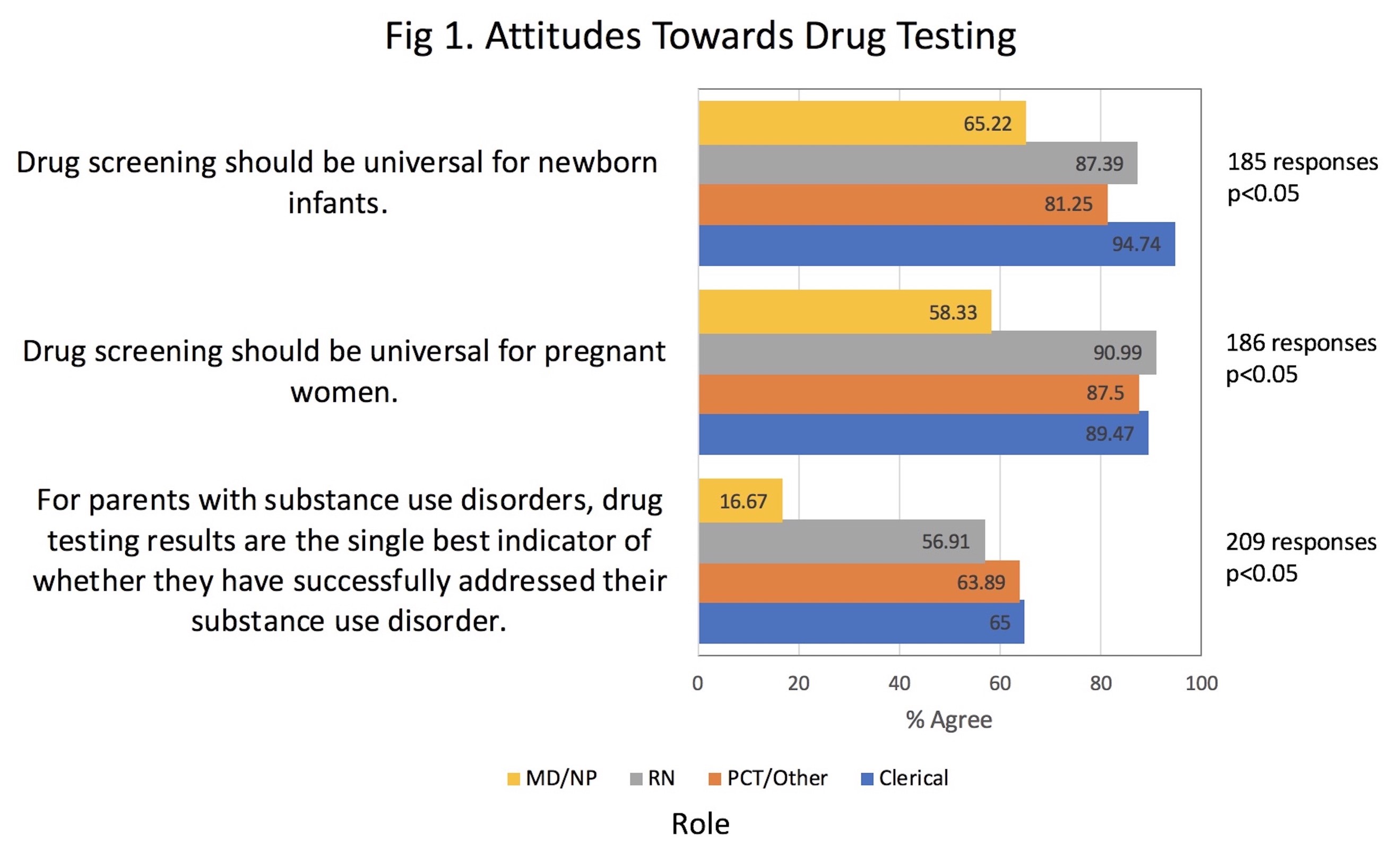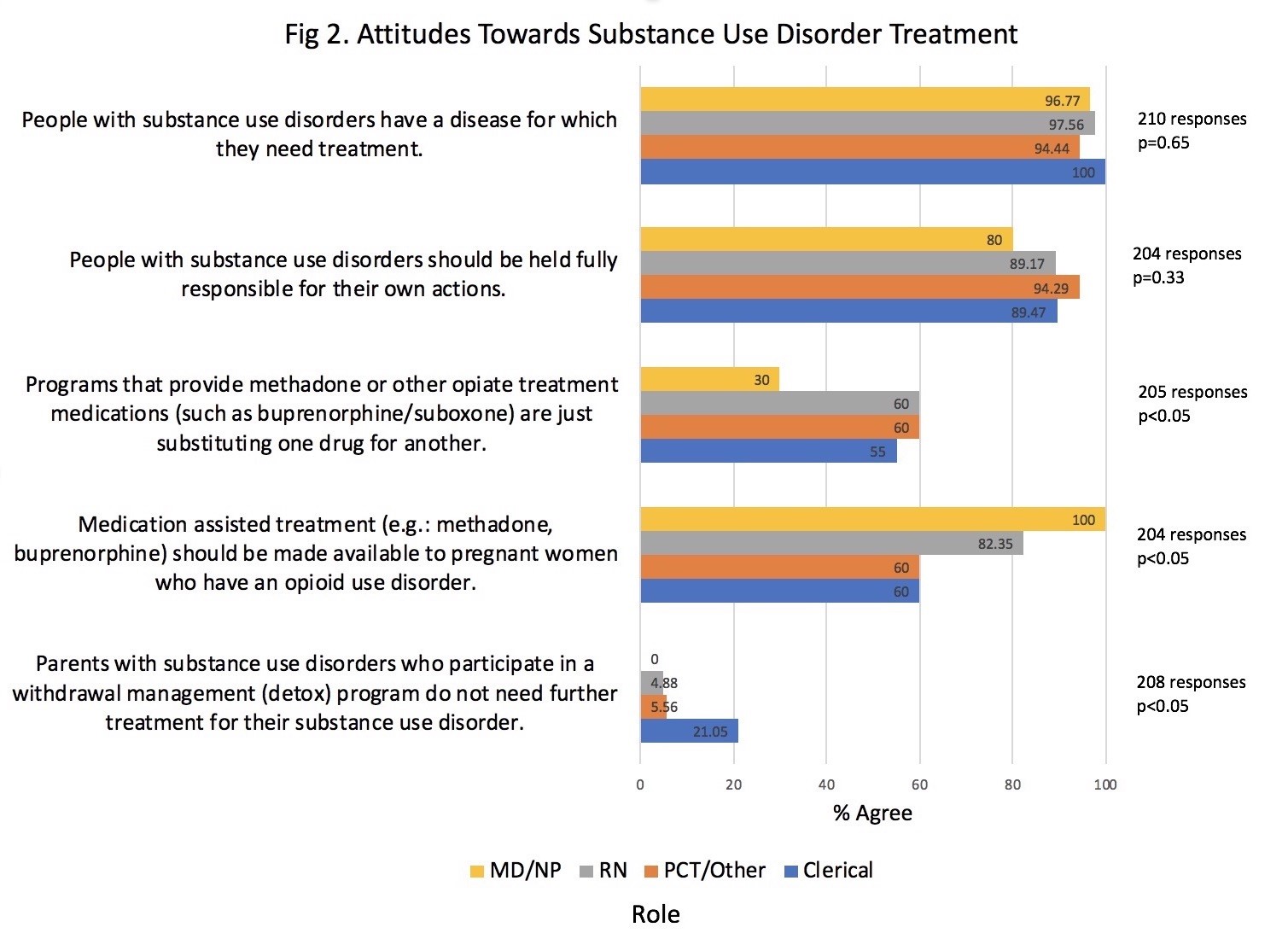Title:
Health care providers’ roles and attitudes towards substance use disorder during pregnancy
Authors:
Margaret A. Williams, Suzanne Muir, Lauren Padalino, Brian M. Casey, William M. Perez, Sara Mazzoni, Lorie M. Harper
Background:
- Patients with substance use disorder (SUD) are vulnerable to stigmatization in the healthcare system.
- Stigma associated with SUD leads to delayed care and worse health outcomes.
- SUD during pregnancy may be associated with increased social and legal penalties including felony charges and loss of custody.
- Previous ACOG committee opinions have:
- 1) cited the adverse health outcomes of policies used to criminalize SUD during pregnancy
- 2) discouraged parent-child separation that is based solely on SUD
- 3) addressed obstetrician-gynecologists’ responsibility to advocate for and refer patients to comprehensive substance misuse treatment programs
Specific Aims:
- To examine hospital staff attitudes towards SUD during pregnancy.
- To analyze differences in attitudes by staff members’ role.
Methods:
- The Collaborative Values Inventory from the National Center on Substance Abuse and Child Welfare was distributed to inpatient and outpatient providers and staff at a tertiary care center for women and infants.
- Self-reported interaction with pregnant, postpartum, or newborn patients was a criterion for participation.
- The 57-item survey addressed drug testing, parenting, child removal/reunification, treatment/relapse, and SUD as a disease.
- Staff were classified based on their self-reported area of work:
- 1) MD/NP
- 2) RN
- 3) PCT/Other: patient care technicians, surgical technicians, ultrasound technicians, respiratory therapists
- 4) Clerical staff
- Groups were compared using chi square tests or analysis of variance (ANOVA) as appropriate.
Results:
- 942 staff received the Collaborative Values Inventory
- 237 (25%) responded
- Baseline Characteristics (Table 1)
-
- The majority of respondents were female (92.8% of total), although males comprised 35% of MD/NPs.
- The majority of respondents in the MD/NP and RN categories identified as white, whereas the majority of respondents in the PCT/Other and Clerical categories identified as black.
- RNs reported more years of experience than MD/NPs and clerical staff.
|
Table 1. Baseline Characteristics |
||||
|
Percentage (%) |
||||
|
MD/NP |
RN |
PCT/Other |
Clerical |
|
|
n=40 |
n=136 |
n=39 |
n=22 |
|
|
Age |
||||
|
<25 |
0 |
13.2 |
15.4 |
4.6 |
|
25 – 34 |
67.5 |
34.6 |
30.8 |
45.5 |
|
35 – 44 |
10.0 |
21.3 |
25.6 |
22.7 |
|
45 – 54 |
10.0 |
22.1 |
20.5 |
27.3 |
|
55 – 64 |
5.0 |
7.4 |
7.7 |
0 |
|
>65 |
5.0 |
0 |
0 |
0 |
|
Gender |
||||
|
Female |
65.0 |
98.5 |
100.0 |
95.5 |
|
Male |
35.0 |
0 |
0 |
4.6 |
|
Other/Prefer not to say |
0 |
1.5 |
0 |
0 |
|
Race |
||||
|
Black |
5.0 |
16.2 |
56.4 |
63.6 |
|
White |
87.5 |
80.2 |
41.0 |
31.8 |
|
Other/Prefer not to say |
7.5 |
3.7 |
2.6 |
4.6 |
|
Ethnicity |
||||
|
Non-Hispanic |
90.0 |
95.6 |
97.4 |
90.9 |
|
Hispanic |
7.5 |
2.2 |
2.6 |
9.1 |
|
Prefer not to say |
2.5 |
2.2 |
0 |
0 |
|
Average Years of Experience |
||||
|
8.4 |
12.4 |
11.0 |
5.6 |
|
- Attitudes towards Drug Testing (Fig 1):
-
- The majority of respondents, regardless of role, supported universal drug screening of pregnant women and infants.
- MD/NPs were significantly less likely to support universal drug testing or to view drug screening results as the best indicator of recovery.
Figure 1
- Perception of Competency
-
- The minority of MD/NPs reported competency in working with or on behalf of substance using populations (38.5%) compared to the majority of respondents in the RN, PCT/Other, and Clerical categories (71.7%, 66.7%, 52.6%).
- Parenting
-
- The majority of respondents in the MD/NP, RN, and PCT/Other categories agreed that people with SUD can be effective parents, compared to a minority of clerical staff.
- The majority of RN, PCT/Other, and Clerical staff agreed that babies who test positive for illegal drugs, or prescription medications not prescribed to their mother, should be removed from parental custody (86.7%, 91.4%, 95%), compared to a minority of MD/NPs (36.7%).
- Attitudes towards SUD Treatment (Fig 2):
-
- The majority of respondents agreed that SUD is a disease.
- MD/NPs were more likely to support pharmacotherapy for SUD during pregnancy and to recognize that treatment beyond pharmacotherapy and withdrawal management is needed.
- The majority of respondents in a non-MD/NP role reported that pharmacotherapy for SUD is substituting one drug for another.
Figure 2
Conclusions:
- The majority of hospital staff recognized SUD as a disease.
- Responses regarding treatment highlight discrepancies in perception of the need for pharmacotherapy and indications for drug screening.
- Educational efforts should be targeted based on providers’ roles in an aim to improve uniformity around an evidence-based approach to SUD treatment during pregnancy and reduce stigma associated with SUD in pregnancy.